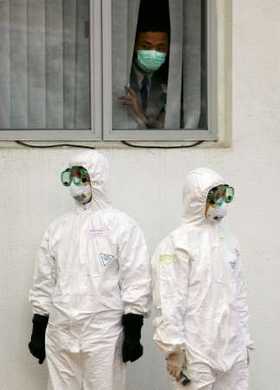Vaccination can prevent flu pandemic
Rhett A. Butler, mongabay.com
November 28, 2005
Vaccinating chickens against avian flu can prevent a major outbreak of the disease by preventing birds from passing on the virus, according to research published by Dutch scientists on Monday.
The study, appearing in Proceedings of the National Academy of Sciences, comes as governments around the world try to stop the spread of the deadly H5N1 strain of bird flu. The virus, which first appeared in China in 1996 among birds, has since spread to humans, though on a limited scale. After first jumping the species barrier in Hong Kong in 1997, there have been several outbreaks. The latest, in the fall of 2005, has had a mortality rate exceeding 50% in humans — 62 of the 122 confirmed cases outside of China resulted in death. In response, more than 120 million birds have been destroyed to prevent further spread of the disease.
In an interview with Reuters, Dutch scientist said “Our conclusion is that vaccination of poultry can prevent a major outbreak of highly pathogenic avian flu viruses.” However, while the vaccination reduces the infectiousness of chickens with avian flu and also the susceptibility of healthy chickens to the virus, researchers say it could take two weeks after vaccination before transmission to other birds was completely blocked.
China has already announced plans to vaccinate billions of birds.
 An observer looks out of a window above two cleaners during a drill for the SARS outbreak in Hong Kong in this November 19, 2004 file photo. Photo by Bobby Yip for Reuters. |
Scientists fear that avian influenza could someday mutate and trigger a worldwide flu pandemic on par with the 1918 outbreak
, which killed some 25 million to 50 million people. Such concerns have triggered a run on antiviral drugs like Tamiflu.
Last month the World Health Organization said a pandemic of human influenza is “inevitable”, and the World Bank said the potential economic cost of such an event would top $800 billion. While the bank concedes that “there are great uncertainties about the timing, virulence, and general scope of a future human flu pandemic,” it used figures from the 2003 SARS outbreak and WHO projections to conclude that a flu epidemic could cause at least $800 billion in economic damages over the course of a year.
This report used information from Reuters.